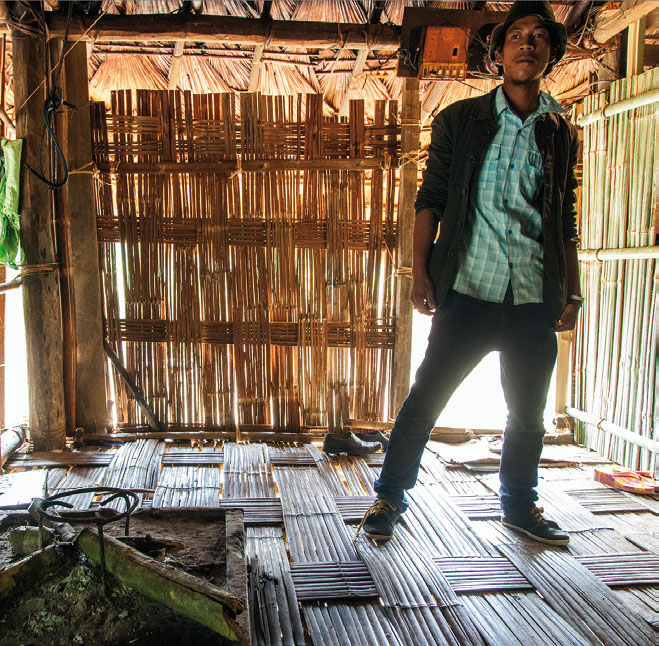Dynamic borderlands: livelihoods, communities and flows
<p>Report of the Fifth Conference of the Asian Borderlands Research Network (ABRN) held in Kathmandu, Nepal, 12-14 December, 2016. All photos courtesy of the ‘Wayfinding Exhibition’; <a href=\"http://socant.su.se/wayfinding\">socant.su.se/wayfinding</a>.</p>
Now in its fifth year, the Asian Borderlands Research Network (ABRN) Conference was jointly organised by the International Institute for Asian Studies (IIAS) and local host Social Science Baha, Kathmandu, from 12-14 December 2016. IIAS, since its inception in 1993, has been promoting global knowledge exchange and collaboration in the studies of Asia and intra-Asian links. Social Science Baha, a non-profit organization based in Nepal, has been engaged in the production and dissemination of social science research since 2002. The Fifth ABRN Conference was a chock-full affair, occupying all four venues at the grand Hotel Annapurna, and seeing full attendance on the three conference days.
Conference themes and panels
This year, the central theme of the conference was ‘Dynamic Borderlands: Livelihoods, Communities and Flows’. Contrary to the general perception of borderlands as remote and static areas, the conference sought to highlight connections across borders that are sustained over time, and contingent processes, social and political, which lend a dynamic character to boundary lines. The conference invited panels to look through the optic of dynamic borderlands and focus on contemporary changes and shifting border alignments that have impacted the lives and livelihoods of diverse border communities, and the tangible and intangible flows across borders.
The various panels were organized around themes that included cross-border trade routes and markets, trans-boundary flows of resources, tourism and environmental products, oral narratives of ethnicity and migration across borders, roads and hydel projects that connect or create conflict between nations, and militarized borderlands. A few of the panel themes ventured into relatively new territories such as towns and cityscapes in border regions, cultures and contact zones in maritime borders, and natural disasters and infrastructure in borderlands. The organization of three parallel sessions for each time slot ensured that participants had a wide range of choice in panels, while being given the possibility to move out of their comfort zone and be introduced to new topics.
While the conference does not have a stated outcome of publishing panel papers as conference proceedings, it actively supports dialogue that results in publications. For example, the forthcoming June issue of The Newsletter will carry in its Focus section a number of papers presented at the conference, with Duncan McDuie-Ra as guest editor.
Special lectures
The ABRN conferences have always displayed an ability to take on the colours and character of their local setting. In 2014, when the venue was Hong Kong, the conference leaned towards a more East Asian thematic. This time, the limelight fell on Nepal and the Himalayas, and on its immediate cross-border counterpart, the North Eastern region of India.
Besides the panels, the conference included a number of lectures by eminent scholars. In a pre-conference event, David Gellner, professor of Social Anthropology, University of Oxford, gave a talk on ‘The Idea of Nepal’ as part of the Mahesh Chandra Regmi Lecture series instituted by Social Science Baha in 2003, in which he outlined different visions of Nepal across the ages – from a sacred geography to a federal, secular republic – while also highlighting new inequalities that have become visible since the recent constitutional make-over in the country.
In the keynote address on the first day of the conference, noted sociologist and chairperson of the Institute of Chinese Studies (Delhi), Patricia Uberoi, spoke on ‘Gender, Trade and New Connectivities: Reflections on India's Northeastern Borderlands’. A founder-member of the BCIM (Bangladesh-China-India-Myanmar) Forum for Regional Cooperation, a Track II level dialogue focusing on development issues from Northeast India to Southwest China, Uberoi raised the question of inclusion in ideas of cross-border connectivity. By engaging the crucial but hitherto neglected element of gender, Uberoi called attention to the important role of women in trade in both India’s North East and in South East Asian countries.
On the third day of the conference Sanjib Baruah, professor of Political Science at Bard College (New York), delivered a special lecture ‘Bringing the Frontier Back In: Borderland Studies and Northeast India’, where he highlighted the need of the concept of ‘frontier’, in the sense of expansion, in understanding the North Eastern part of India, a region that has been seen as both a settlement frontier and resource frontier, but is additionally a frontier from a security perspective, because of its associations with danger and disorder.
Additional events
In the spirit of a borderlands conference, the ABRN hosted the ‘Wayfinding Exhibition’, a photo-ethnography of indigenous migration, by Andrzej Markiewicz, Dolly Kikon and Bengt G. Karlsson (socant.su.se/wayfinding). The theme of this travelling photo exhibition originated from the book North East Migrants in Delhi: Race, Refuge, and Retail, by Duncan McDuie-Ra.
The conference also hosted an evening of protest music with singer/songwriter Ronid (Akhu) Chingangbam from the militarized Indian state of Manipur. Two events organised exclusively for conference participants – a one-day hiking excursion to Nagarkot-Changu and a two-day trip to the Janakpur border – were added attractions.
The Sixth ABRN Conference
The Sixth ABRN Conference to be held in 2018 has a number of potential hosts in Bangladesh, Malaysia and some other East Asian countries, though the final venue has yet to be decided. The call for papers will be announced in December 2017.
Swargajyoti Gohain, Assistant Professor, Sociology and Anthropology, Indian Institute of Technology Kanpur and Ashoka University, India (swargajyoti@gmail.com)



